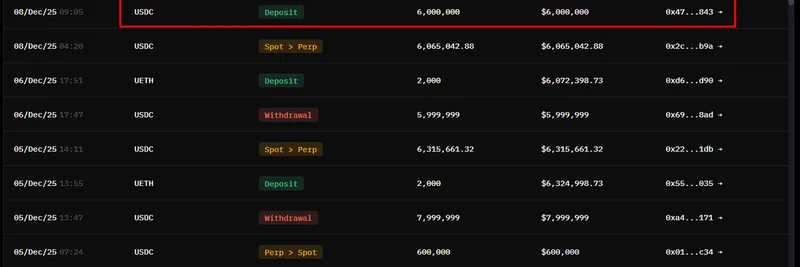If you're keeping tabs on the blockchain world, you've probably caught wind of VeChain's latest big move. BSCNews recently dropped a tweet highlighting the Hayabusa upgrade—one of the most game-changing updates from @vechainofficial. This isn't just another tweak; it's a full-on evolution that's set to reshape how VeChainThor operates. Let's break it down in simple terms, so even if you're new to crypto, you can follow along.
What Is the Hayabusa Upgrade?
Named after the peregrine falcon—known for its incredible speed and precision—the Hayabusa upgrade is the second phase in VeChain's Renaissance roadmap. At its core, it's shifting the VeChainThor blockchain from a Proof-of-Authority (PoA) system to a Delegated Proof-of-Stake (DPoS) consensus mechanism.
PoA is like having a trusted group of validators handpicked to keep things running smoothly, which is great for stability but can feel a bit centralized. DPoS, on the other hand, opens the door for more community involvement: anyone with enough tokens can step up as a validator, or you can delegate your stakes to others and still earn rewards. This upgrade isn't just technical jargon—it's about making the network more democratic, secure, and ready for real-world uses like supply chain tracking and sustainability projects.
The tweet from BSCNews points straight to their in-depth post on bsc.news, calling it one of VeChain's most impactful implementations ever. And they're not wrong—this could supercharge VeChain's role in enterprise blockchain.
The Roadmap: From Proposal to Mainnet
VeChain didn't rush this. The process kicked off with a proposal on VeVote, their governance platform, back in mid-August 2025. Voting wrapped up quickly with unanimous approval by August 25, showing strong community buy-in.
Next came the testnet phase in early September, where devs got to poke around the new DPoS setup and token tweaks. If all goes well (and so far, it has), the mainnet launch is slated for late December 2025. That's Q4 for those tracking quarters—plenty of time to iron out any kinks.
Diving into the Technical Details
Let's get into the nuts and bolts without overwhelming you. The big shift is in consensus: DPoS means validators are elected based on stakes, and they share rewards with delegators. To become a validator, you'll need at least 25 million $VET (VeChain's governance token). Don't have that much? No sweat—you can delegate to someone who does.
Tokenomics are getting a refresh too. Say goodbye to passive $VTHO (the gas token) rewards for just holding $VET. Now, rewards come from active staking, which ties everything to network activity. Transaction fees in $VTHO get partially burned (creating scarcity) and redistributed to stakers. This deflationary vibe could make $VET more valuable as the network grows.
On the ecosystem side, expect better EVM compatibility for smoother cross-chain interactions and upgrades to tools like the VeWorld wallet. There's even a staking program via StarGate, starting at 10,000 $VET for a Dawn Node, with a hefty bonus pool of 5.48 billion $VTHO over six months.
Benefits for Users and the Network
This upgrade cranks up decentralization, spreading power beyond a small group of nodes. That means better security, less risk of single points of failure, and a network that's more appealing to big players like enterprises.
For $VET holders, it's all about incentives: stake actively, earn more, and contribute to the network's health. It encourages efficient use of resources and aligns everyone's interests for long-term growth. Plus, with deflationary mechanics, rising transaction volumes could boost token value through burns and rewards.
VeChain's already got solid partnerships—think Walmart, BCG, UFC, and Franklin Templeton. Add in custody from BitGo (with $250 million insurance), liquidity via Crypto.com, and validators like Keyrock, and you've got a robust ecosystem ready to handle DeFi, asset tracking, and more.
Potential Impacts on the Crypto Space
For everyday users, this means shifting from passive holding to active participation—stake your $VET or delegate to keep earning $VTHO. It's a nudge toward more engagement, but it requires some minimums, like 10,000 $VET for basic nodes.
On a bigger scale, Hayabusa positions VeChain as a top Layer 1 for real-world apps, with over 4 million users already on board through tools like VeBetterDAO. Market-wise, $VET was hovering around $0.023 in early September 2025, but analysts see upside if the new tokenomics draw in more demand.
This upgrade isn't just for VeChain fans; it's a signal of how blockchains are evolving to balance speed, security, and sustainability. If you're into crypto, keeping an eye on this could give you insights into broader trends.
Stay tuned to Meme Insider for more updates on how innovations like this ripple through the token world. Whether it's meme coins or enterprise chains, we're here to break it down.

